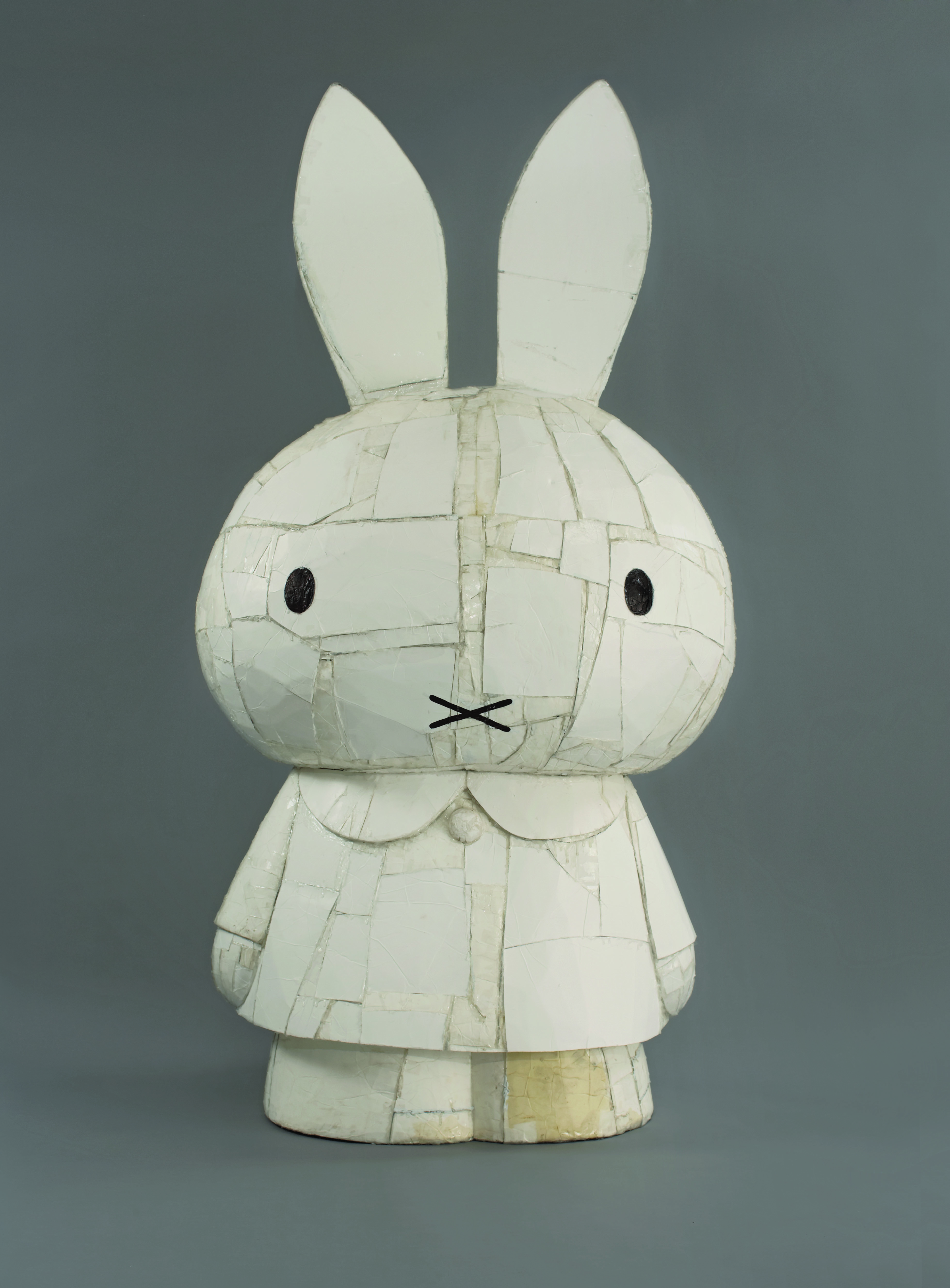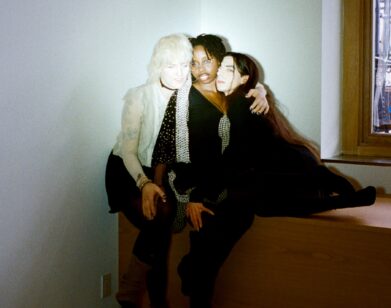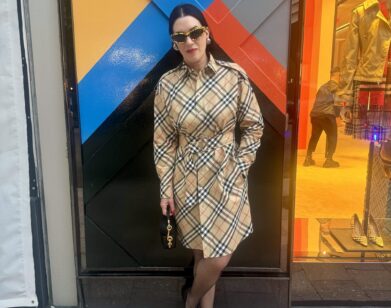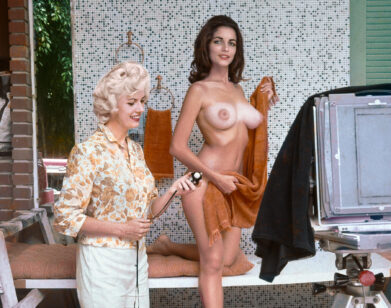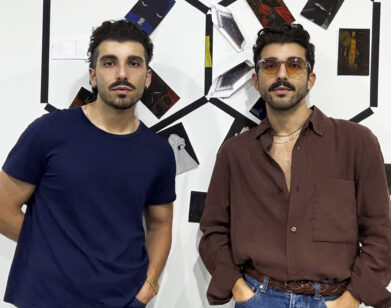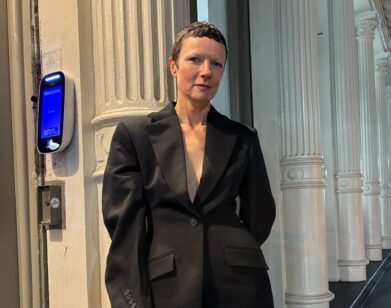Tom Sachs
Tom Sachs is an artist whose Pop-the-Next-Generation Art melds seamlessly such heady and usually disparate notions as bricolage, dub, and magic with masterful results. His friend Ricky Jay is a writer, an actor, and above all a transcendent sleight-of-hand artist. He is steeped in the lore of illusion and is well known for debunking occultists. This conversation anticipates Sachs’s exhibition of new work, “Animals,” at the Sperone Westwater gallery from May 8 to June 21. Sachs is unveiling 12 heroic sculptures at Lever House, including giant painted-bronze figures of Hello Kitty and Miffy that are also fountains.
RICKY JAY: How are you?
TOM SACHS: I’m gooda little frazzled over switching to a digital recorder. I wanted analog, because I don’t think, if my life depended on it, I could fix a digital recorder.
RJ: I’m a complete Luddite. You build all your remarkable stuff. I can’t put a nail in the wall to hang a picture.
TS: I don’t believe that. You throw cards 200 miles an hour—
RJ: Sure. I’m very good at things that have no practical application in the world at all. But turning on my computer is beyond me.
TS: I think we’re in a difficult time, because technical stuff is clearly becoming the dominant thing, but you and I both know how to do the supermanual stuff. . . . Actually, I think the things you do with your hands with magic are akin to some of the things that people do with their hands with computers. It’s all about how you change the world with your hands.
RJ: That’s a funny thought.
TS: My girlfriend is a Photoshop wizard, so she creates reality as we know it. There’s a manipulated photograph that you had in the show you curated at Christine Burgin’s gallery a few years ago, and it turns out she photographed that exhibition, and those things created a kind of belief in spirituality. All that magic that was happening in the beginning of the 20th century was at a time when technology was very new and mystifying to people.
RJ: You’re absolutely right. There was one point when the advances of magic were the advances of technology. It was technology couched as performance, which is a fascinating thing.
TS: In our last conversation, we talked about The Golden Bough and the power of magic and art to transform. I don’t know if you had time to think about my exhibition.
RJ: It strikes me that there are lots of similarities and lots to be explored between the two of us. But this is supposed to be about your work.
TS: It doesn’t have to be about my work per se. There are other places where people can learn about that. I think we shouldn’t try to make this conversation be anything that it can’t be.
RJ: That reminds me of David Mamet’s Glengarry Glen Ross: “Are we speaking or are we talking about it?” I guess we’re talking about it.
“technical stuff is dominant, but you and I both know how to do the supermanual stuff.” Tom Sachs.
TS: We are. This exhibition that I’m doing is “Animals,” and what I’m trying to do is . . . I read this book, and there’s a great quote in it: “When life gives you lemons, make lemonade.” It’s in a book by Dale Carnegie. It’s all about how he creates his life. He has good things and bad things happen to him, and he manages always to be proactive in making changes that make his life happen the way he wants it to. It’s not about manipulating, but about using all kinds of forces of creativity to make the best of things, or to use things besides science to generate real results. When I was reading your Cards as Weapons book, where you quote The Golden Bough, you talk about being “careful when you make a target out of your enemy’s face.” What’s interesting to me is how you make a voodoo doll and your enemy winds up getting sick.
RJ: When Frazer talks about it in The Golden Bough, he talks about the idea of similarity. There’s either the law of similarity or the law of contagion. That a magician can produce any effect he desires by merely imitating it-that’s the law of similarity. The law of contagion is that whatever one does, whatever a conjurer does to a material object, affects the person who was once in contact with the object—the idea of the voodoo doll. They’re both powerful. But in terms of scale . . . well, that’s a good place to start, because scale is really interesting in terms of your work. There really are illusions involved in it. You have pieces that exist in one-to-one scale, and then you have pieces that exist in scale that’s much, much tinier, and then you often combine them. Right?
TS: Yes.
RJ: So do you find one scale more appealing than the other? Or is it the combination that you love?
TS: The key issue for me is always the scale and how it relates to our bodies, because we are all roughly the same size. We’re between 4 and 7 feet tall, whereas a building is hundreds of feet in dimension. When it gets shrunk down to 1/25th scale, which is a reduced scale they use commonly, a gigantic housing block becomes only 18 feet long. The architecture gets shrunk down to a scale that’s closer to us. So I’m always very selective about the kinds of objects and the effect when they’re shrunk down and how they relate to us. I made a gigantic tank tread that was used on the crawler for the spaceship, and I made that full-scale, but in foam-core paper. That’s about 6 feet long. It weighs 4,000 pounds as a chunk of cast iron. At 4,000 pounds, it always exists in a horizontal state, but in paper it’s vertical, so it’s almost like a figure. Then I have some smaller things like a Sony PlayStation controller, which fits in the palm of your hand, blown up large. But if you blow that up 10 times, it becomes like a porpoise or a dog or something. It relates to us still in a submissive role, the way a domestic animal would, but in a form of something that is like a symbol of manipulation and control.
RJ: Do you design these sculptures to reveal additional information of either beauty or crudeness when seen from a closer vantage point?
TS: Definitely. That’s a great question. I didn’t ever really think about that I do that, but these are the instinctive things that I reproduce. To put a urinal on a pedestal helps you see it as a sculpture, and if you look at industrial ceramics, like toilets and urinals, you’ll see that, like other sculptures, some of them are beautiful and some of them are ugly, some of them are crude, some are elegant-it takes all kinds. I always gravitate toward things that are either extremely elegant or extremely crude, but in one way or another aren’t compromised. I’m not interested in representing objects of mediocrity, only objects of excellence.
RJ: But how imperfect should something be, like the space module, to still be considered art? If it’s exactly like the space module that exists, is it art?
TS: Well, I would argue that the space module that exists is art. I think if you make a model of it and it’s less interesting . . . I’m not sure if the one that landed on the moon is more or less interesting than mine. I think it’s more interesting for me, but this is, again, my way of experiencing it, and going to the moon and achieving those results is through that effort. What I learned from studying the whole space program, or from reading your book on how to throw cards as weapons—although it’s not implicit in the book—is that the real experience is all that training. I mean, when you get into the situation where you’re actually in a fight and you have to use a playing card as a weapon, or when you get to the moment when you’re actually landing on the moon, if you’re going to be successful at either, the event has become routine because you’ve performed it so many times. So for me, the space program was an exercise in routine, in building it and preparing and rehearsing. The actual moment itself is almost incidental. I think that’s the state that, if you were to do something so recontextualized and insane as throwing a playing card as a weapon or actually landing on the moon, the surrealness and insanity of that concept, that for millions of years man’s wanted to do . . . if you’re actually going to do that impossible thing, you have . . . you have to prepare. [laughs] For lack of a better word.
“meth-heads get into masturbation, so I made a skull attached to a vacuum that you could hump.”Tom Sachs.
RJ: Well, they both do work on lots of levels. But you also deal with the illusion of the constructed reality, which is a great thing. Like the splash-down and the helicopter. You simulate that with a common toy. Did you first see the toy and think that that will work, or did you envision the touchdown and then search for a method of retrieval? How much of what you’re doing is like the construction of a magic effect? Does it always follow the same pattern? Do you always look for the effect first and then the method, or does it change from piece to piece?
TS: I don’t know about the magic method, because I haven’t done it. But from my experience, it’s both, and either or neither. For example, the helicopter effect was a toy from my childhood that I feared and lusted after because—
RJ: Why feared?
TS: Because if you got your finger caught in that blade, it hurt. It was really hard to control as a 6- or 7-year-old. It takes a lot of agility now. As an adult, I was able to master it. But we had it in the studio for a few months, and we actually had contests among adults to see who could safely rescue the capsule and land it on the carrier deck quickest, and we got it down to eight seconds. The first tries were like two minutes. No one could do it. Then after a few months, it was eight seconds; then someone came in and did seven seconds on the first try-
RJ: Someone who had never done it before?
TS: Yeah. A young kid who’s good at video games came in and turned it out, and he was like, “So what . . .” We were standing there with our thumbs up our ass! It didn’t surprise me. It was shocking, but it made sense instantly.
RJ: I was just going to extol the virtues of practice. I guess the kid who’s able to do it in seven seconds is really doing sympathetic magic.
TS: But I think the kid had been doing his martial arts training on PlayStation, on video games.
RJ: Yes-because he’s been practiced in one area, he can affect it in another.
TS: Is that the case with you and your magic?
RJ: I have to say, yes, sometimes I think of an effect first and sometimes I think of a way . . . I might see a film that inspires me to want to do an effect, or else sometimes I have a technique that I’ve worked on that I think would really work and then I think of a context. It changes all the time. I was thinking about this last night, looking at this stuff of yours, that you’re dealing with inclusivity rather than exclusivity, in the sense that the storyboard becomes part of the project, and notebooks become part-the sketches, the materials, the tools themselves. The film of the process of creation becomes part of the creation. It seems that in a lot of your stuff, every part of it becomes part of the finished work of art. I don’t know if I’m mischaracterizing this or not, but in magic it seems remarkably different, in the sense that every phase of the work is not seen until you’re showing it to the public.
TS: Right.
RJ: It’s just the opposite. For instance, I’ve been working as an actor a lot over the last decade or so, and I find that I can’t read for a part. I can’t because it’s like practicing in public, and it feels like my dick is hanging out. It’s so antithetical to everything I’ve done in my life. But it seems like you’re including every part of it. I’m not, by the way, saying that one is better than the other . . . but that every part of the project becomes part of the actual piece of art.
TS: That’s a great distinction. One of my strategies, which sometimes works to my disadvantage, is transparency. I believe that showing everything is the most courageous thing that you can do. Last year I did a video where I’m fucking this skull. It’s called Jackoff Meth Lab. I made a crystal-meth lab, and you know, one of the things that meth-heads get into is excessive masturbation, and so I made this skull attached to a vacuum cleaner that you could hump, so that you could have a really good thing to fuck. So I made an instructional video for it. I wanted to demonstrate the skull-fucking part, and I didn’t feel comfortable asking anyone else on my team to do it, so I did it. It was really embarrassing. But I think it’s important.
When you see the spaceship, you can see the fiberglass tape that holds it together and all the screws, and I think what holds it together is . . . the magic, not in the sense that we’ve been talking about, but that’s the part that’s got the soul or the truth or the interest. If you look at your cell phone or camera or whatever, the manufacturers have been working pretty diligently for a couple of hundred years to slowly and consistently remove the evidence of their craftsmanship. If you look at a car today versus 35 years ago, you can see that the evidence of its construction now is completely removed. Occasionally you’ll see a seam in the mold where the two pieces of plastic were molded together. But for the most part, it’s miraculous in its construction. I’m not going to try to compete with those guys, because I make everything by hand with a small team of people in New York City, the most expensive place to build something on the planet. So my advantage is showing every single process. As a result, I fear that sometimes the mystery is lost, or, as other artists for centuries have made efforts to remove, like you do . . . to create the illusion. Now, of course, you create an illusion to generate magic, and I guess you could say that a cell phone is the same thing. However, my reluctance, and where I join with you in being a Luddite, is not in a fear or hate of technology; it’s just the loss of quality. Digital telecommunications are cheaper, but they’re not as high-quality as analog. It just doesn’t sound as good. It’s a miracle they work at all. And I’m grateful I can drive and talk. That’s a pretty impressive, magical thing, if you think about 30 years ago not being able to do that. But I think that there is a loss, and that there is something missing, and I’m trying to hold onto perhaps an old value, but something that is humane.
RJ: Well, you want to show the work.
TS: Yeah.
RJ: It’s funny, because in magic that often isn’t good. You find magicians who want to reveal how hard they worked on something. That’s why something like throwing cards is so different from creating an effect of magic, where the concept is that you do nothing and magic takes place, even though we absolutely know that the very thing you’re fond of, all of this practice and thought that goes into it, is really there. Ostensibly nothing happens; and then, something that is very skill-oriented, like throwing a card, you practice it and you throw it, and then, if you do it enough, it works.
One thing I think our work shares is interactivity. I think it’s quite interesting to have artwork where people are participating, like racing cars. And yet, that kind of interactivity in my world . . . it’s almost the bête noire of magic in a theatrical setting. It takes you out of this wonderfully realized thing. So it can become the weakest part of the show, without any question. And yet magic to me, at its absolute best, is the realization of something suggested at the moment. It’s the very impromptu nature of not knowing what that spectator will do or say that’s the art at its highest form.
TS: That’s when you’re sticking your neck out—
RJ: Absolutely. Sure.
TS: —because there’s a kind of vulnerability.
RJ: Yes, you’re incredibly vulnerable, but it’s really wonderful.
TS: That’s why, when I did that space program demonstration, I was careful to call it a demonstration rather than a performance. I mean, we had a checklist of 75 events, and we executed all of them, and sometimes not in the right order, and sometimes we had to skip some, but we would say to ourselves, “Okay, guys, we have to skip number 73 because it’s broken, and we’ve got 25 people or 150 people watching, and it’s going to take an hour to fix it, so let’s just do it next time.” That would be disappointing for us, especially if we had rehearsed it 50 times and finally got an audience, but that’s kind of the compromise we made between doing the perfect demonstration, which would last four hours, versus the public performance demonstration that would be 45 minutes to an hour and respect our audience’s attention span. I was raised, as a student, on Situationalist Performance Art where people would do performances four hours long. But I was also raised watching MTV, and I know that 30 seconds is the maximum attention span of anyone for anything. So I try to break things down into 30-second bits that you can link together enough to keep someone for an hour.
RJ: I love the idea of being able to come in and out of your pieces any way I want. Whereas in magic, it’s very much . . . not only is it linear, it’s controlled. That’s pretty much what you’re doing in magic, you’re controlling what people see. I wrote the essay on magic for the Encyclopedia Britannica, and I actually called conjuring “the theatrical representation of the defiance of natural law.” Then I started thinking that you’re really doing that. Right? That you’re defying natural law by a change of perception, changing reality, changing scale, changing value. These are all things that I think you. . . . Do you think that’s a fair characterization, that you’re playing with all of that.
TS: I’ll take it.
RJ: So do you think of yourself as an illusionist?
TS: As I said before, the evidence of construction is present, but there’s also a mystery behind everything that I think has some other qualities I can’t describe.
RJ: Good!
TS: Half the battle is knowing what to make. The other half is not knowing what to make.

